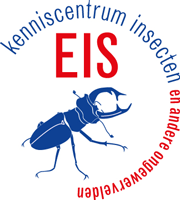| Reële kans op vestiging? |
Ja |
|
| Betrouwbaarheid beoordeling |
Grote mate van zekerheid (meerdere bronnen) |
|
| Vestigingsstatus |
Gevestigd |
|
| Zeldzaamheid |
Algemeen |
|
| Invasiviteit |
Potentieel invasief |
|
| Invasiviteit (toelichting) |
The native range of B. stolinifera is considered cryptogenic (Winston & Hayward 2012). It may originate from the North West Atlantic, where it ranges from New Hampshire to the Gulf of Mexico and is also present at Bermuda and Jamaica. The species is introduced to the West Coast of the United States, Panama, Hawaii, Australia, New Zealand, China, India, Brazil, Argentina and Europe. In Europe it was first described from Swansea, Wales in 1959 (Ryland, 1960). The species was, however, present much earlier in the Netherlands, as it was discovered in the former brackish Zuiderzee, before it was converted to a freshwater lake in 1932. The species has a high adaptability to different habitats and substrates (stones, wood, plants, weeds, oysters); has a broad temperature range (cold temperate-tropical); a broad salinity range (polyhaline-euhaline); has proven its invasiveness outside its (probable) native range and is now widely distributed over Europe and elsewhere around the world. |
|
| Type introductie |
Niet opzettelijk |
|
| Jaar van eerste introductie |
1884 |
|
| Jaar van eerste melding |
1885 |
|
| Natuurlijke verspreiding |
Noordelijke Atlantische Oceaan |
|
| Verspreiding in Nederland |
Friesland |
|
Noord-Holland |
|
Zeeland |
|
| Verspreiding in Nederland (toelichting) |
Faasse (1998) has shown that indigenous colonies of Bugula avicularia observed in the former Zuiderzee (Horst 1885), all in fact have to be considered B. stolonifera. The earliest record now is at least 1885 and not 1993 (Wolff 2005). The species has a wide range in the Netherlands and is present throughout the province of Zeeland, including Lake Grevelingen and Lake Goes, and also lives in the Wadden Sea area, but her it was only observed near the islands of Texel, Terschelling, Ameland; Gittenberger et al. 2009). |
|
| Habitats |
Mariene habitats |
|
Estuaria en brakwatergebieden |
|
| Wijze van introductie |
Aquacultuur |
|
Aangroei op scheepsrompen |
|
Onderling verbonden waterwegen/bassins/zeeën |
|
| Impact |
Concurrentie |
|
| Ecologische impact (toelichting) |
B. stolonifera has been found attached to many different substrates, natural (wood, stones) as well as artificial (pilings, dock floats, ships' The species is considered a frequent component of fouling communities in harbours and marinas (Fofonoff, 2003). In marinas it may be one of the few species growing in stressful conditions with low oxygen and high organic input, as is observed in the Aegean Sea, Turkey (Koçak 2007). In future this species may be partly outcompeted by T. inopinata, another invasive bryozoan. When T. inopinata invades areas where B. stolonifera occurs , often a decline in numbers is noted. This may well be the result of a higher tolerance of T. inopitata for different temperatures and salinities. B. stolonifera is less tolerant to habitats with a higher salinity (Vliz 2011). |
|
| Economische impact (toelichting) |
At the moment there are no data on the economc impact of B. stolonifera in the Netherlands. As with other fouling species, removing growth on boats and other object may lead to certain costs. |
|


